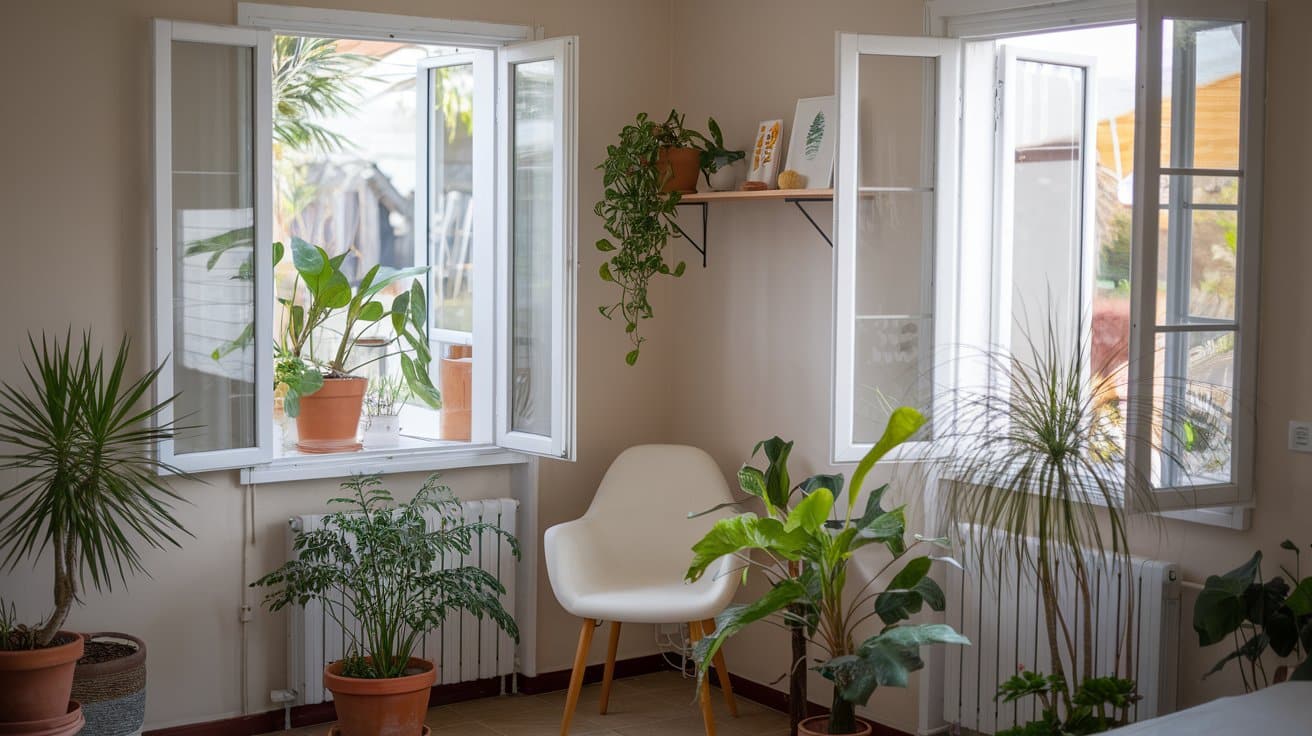Does your home smell stale and unpleasant?
That musty odor isn’t just annoying; it signals deeper problems lurking in your living spaces. Many homeowners struggle with these persistent smells without knowing their source or how to fix them.
The good news for you is that you can banish musty odors for good. This guide offers practical methods for identifying, removing, and preventing these unwanted odors from recurring.
Fresh air makes your home more comfortable and inviting. It also protects your family’s health and the value of your property over time.
Let’s find out proven solutions that work. You’ll learn exactly what causes musty smells and how to eliminate them permanently using simple household items and techniques.
What Causes Musty Smells in A House?
Musty odors develop when moisture meets organic materials. This combination creates perfect conditions for mold and mildew growth. The result? That characteristic, damp, earthy smell.
Several factors contribute to the development of musty odors in homes. Understanding these causes helps you target the source effectively. Here are the main culprits:
- Poor Ventilation: Stagnant air traps moisture and prevents fresh air from circulating correctly.
- Water Leaks and Damage: Dripping pipes and roof leaks create wet spots that foster mold growth.
- Damp Basements or Crawl Spaces: These areas naturally collect moisture from groundwater and condensation.
- Wet Carpets and Fabrics: Spills and flooding leave materials damp, creating breeding grounds for mildew.
- Hidden Mold Growth: Mold behind walls or under floors produces odors without visible signs.
- Clogged HVAC Systems: Dirty filters and ducts spread musty smells throughout your entire home.
Each cause requires specific treatment methods. Some problems require professional help, while others can be resolved with simple fixes. Identifying your particular issue ensures you choose the right solution.
Why Is It Important to Eliminate Musty Odors?

Musty smells affect more than your comfort. They indicate moisture problems that need immediate attention. Ignoring these odors leads to serious consequences for your home and health.
1. Health Concerns
Breathing musty air triggers various health issues. Mold spores cause allergies and respiratory problems. Children and elderly people face higher risks.
Symptoms include coughing, sneezing, and breathing difficulties. Long-term exposure can lead to chronic respiratory conditions.
2. Property Damage
High humidity and excess moisture are the primary causes of musty odors and can cause significant damage to your home.
When humidity levels exceed 60%, mold and mildew thrive, leading to structural damage like rotting wood, peeling paint, and crumbling drywall.
3. Quality of Life
Living with bad smells affects daily comfort. Guests notice unpleasant odors immediately. Your clothing and furniture absorb these smells.
A fresh-smelling home improves everyone’s mood and well-being. Nobody wants to live in a home that smells musty.
How to Identify Musty Smells in Your Home?
Finding musty odors requires careful investigation. Start by trusting your nose when you enter each room.
Walk through your house slowly, paying attention to any changes in the smell.
Notice areas where the air feels heavy or stale. Temperature differences often indicate moisture problems as well.
Check common problem areas first. Basements, bathrooms, and laundry rooms often harbor a musty odor.
Look under sinks, around windows, and near water heaters. These spots trap moisture easily. Don’t forget to inspect closets, attics, and storage areas.
Use your other senses, too. Feel the walls for dampness or cool spots. Look for water stains, discoloration, or peeling paint.
Listen for dripping sounds behind walls or under floors. Watch for condensation on windows or pipes.
Document where smells are strongest. Note the time of day when odors worsen. Weather changes can affect smell intensity. This information guides your cleaning efforts. Focus treatment on these documented areas first.
Step-By-Step Process to Remove Musty Odor
Follow these proven steps to eliminate musty smells completely. Each step builds on the previous one. Complete all steps for best results.
Essential Items You’ll Need
Gathering the right supplies ensures effective odor removal. These tools and products target the source of musty smells.
• White vinegar
• Baking soda
• Activated charcoal
• Spray bottles
• Microfiber cloths
• Rubber gloves
• Face mask
• Dehumidifier
• Air purifier
• Mold remover spray
• Scrub brushes
• Vacuum with HEPA filter
• Box fans
• Moisture meter
Step 1: Clean and Dry Affected Areas
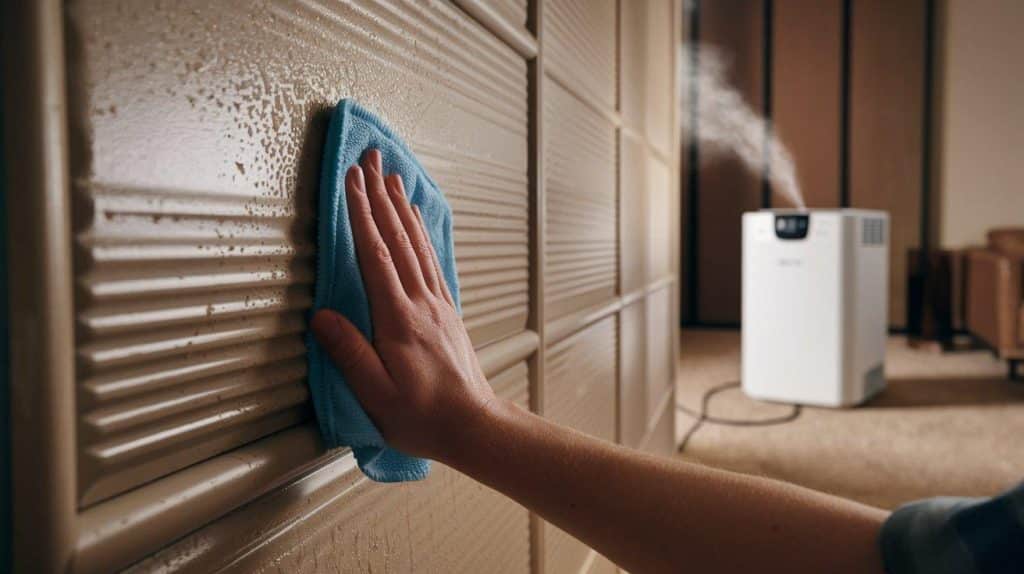
The first step in eliminating musty odors is addressing the source of excess moisture. Ensure any wet surfaces are dried promptly using fans or dehumidifiers, and increase airflow by opening windows or using ventilation systems.
Clean visible mold with appropriate products. Scrub surfaces thoroughly. Dispose of heavily contaminated materials. Wear protective gear during cleaning.
Vacuum carpets and upholstery deeply. Steam clean if possible. Allow everything to dry completely. Moisture removal is crucial for success.
Step 2: Use Natural Odor Absorbers
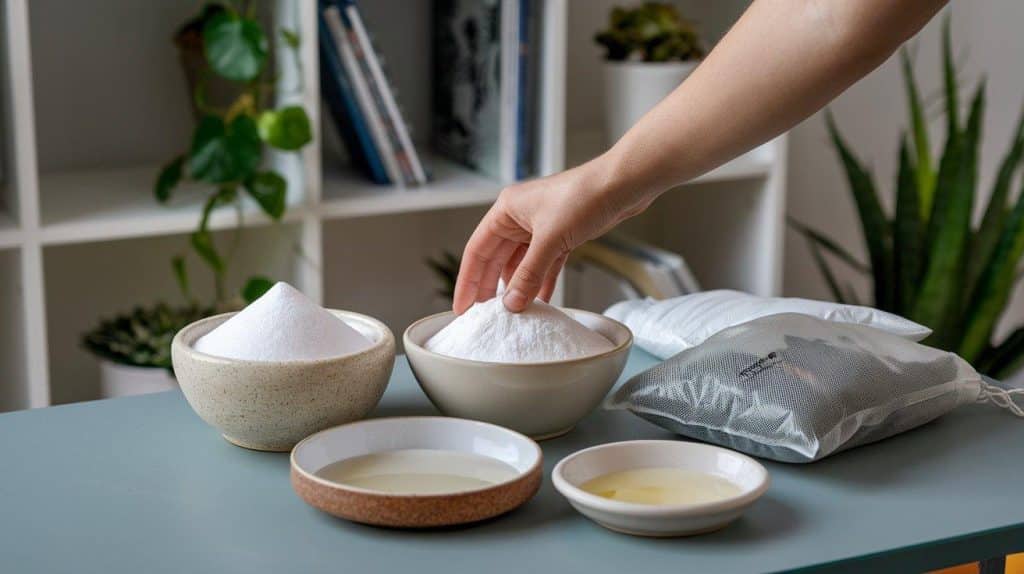
Place bowls of baking soda around affected rooms. Leave them overnight to absorb odors. Replace every few days until the smell disappears.
Sprinkle baking soda on carpets and furniture to freshen them. Let it sit for several hours. Vacuum thoroughly afterward. This method works well for fabric odors.
Try activated charcoal for stubborn smells. Place bags in closets and confined spaces. White vinegar in shallow dishes also effectively neutralizes odors.
Step 3: Use a Dehumidifier and Air Purifier
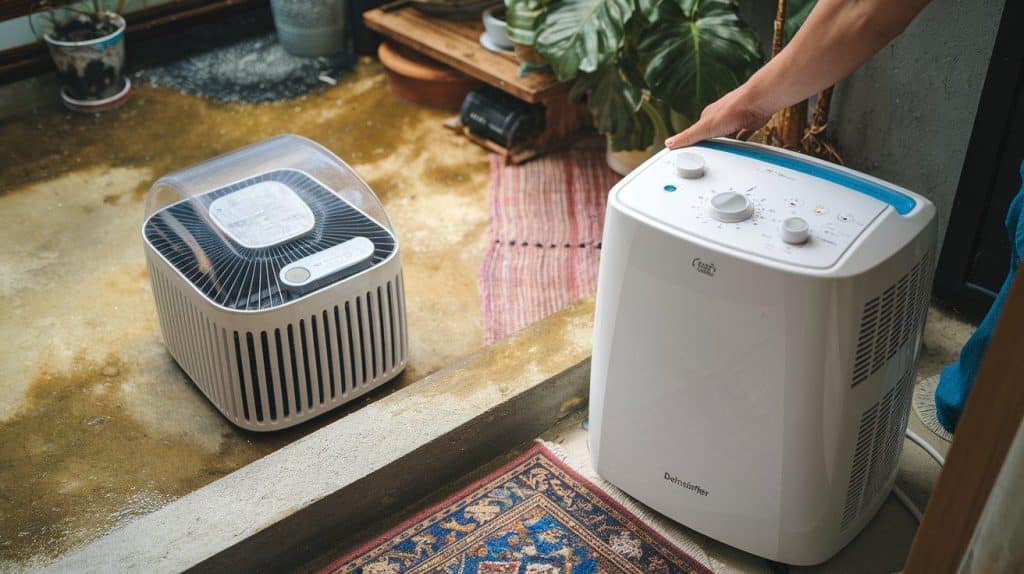
Set up dehumidifiers in damp areas. Maintain humidity below 50 percent. Empty water tanks regularly. Monitor levels with a hygrometer.
Install air purifiers with HEPA filters. These capture mold spores and odor particles. Run continuously in problem rooms. Change filters according to the manufacturer’s instructions.
Consider whole-house dehumidification for severe issues. Professional installation may be necessary. This investment prevents future moisture problems.
Step 4: Apply Mold and Mildew Remover
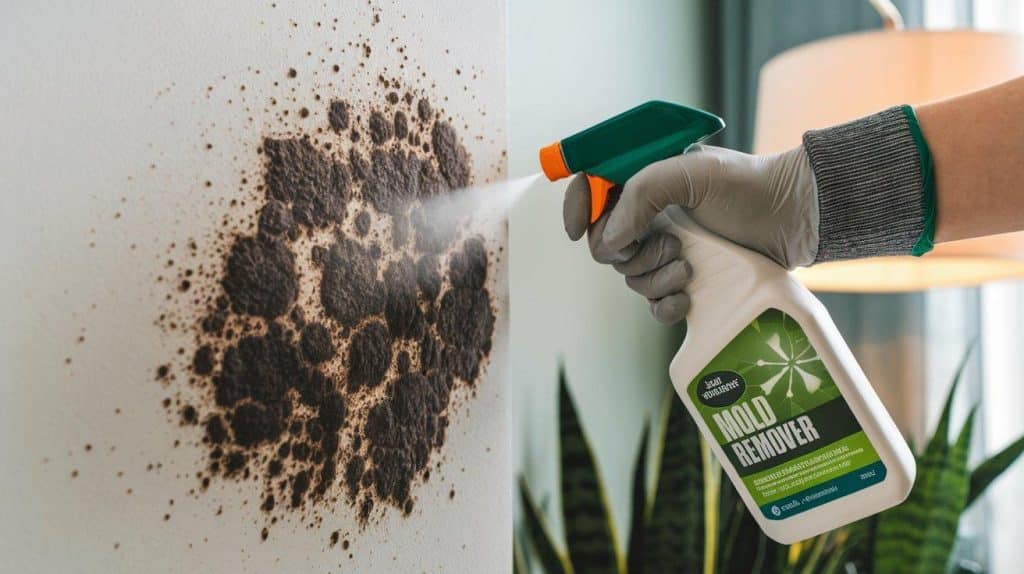
Choose appropriate cleaning products for your surfaces. Test in hidden areas first. Some products damage certain materials.
Spray affected areas generously. Allow products to work as directed. Scrub stubborn spots gently. Rinse thoroughly with clean water.
Repeat treatment if odors persist. Some situations require multiple applications. Be patient with the process. Complete mold removal takes time.
Step 5: Air Out Your Home
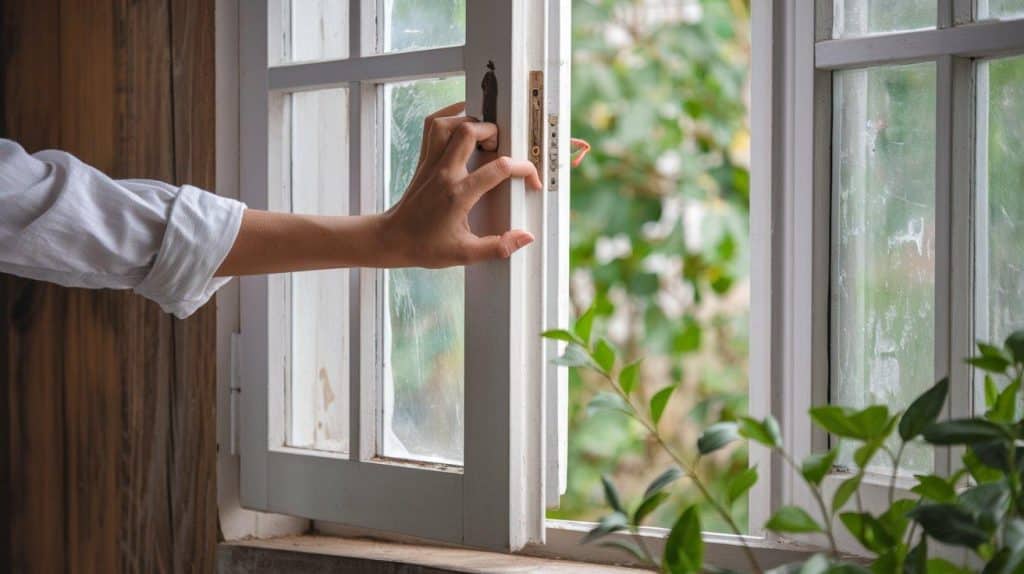
Open all windows and doors. Create cross-ventilation throughout your house. Use fans to boost air movement. Fresh air replaces stale, musty air.
Continue ventilation for several hours daily. Weather permitting, leave windows open overnight. This simple step makes a big difference.
Run bathroom and kitchen exhaust fans regularly to keep them functioning properly. These remove excess moisture quickly. Check that the vents lead outside properly.
Preventing Musty Smells from Returning
Prevention saves time and money long-term. Simple habits stop musty odors before they start. Regular maintenance costs far less than major mold remediation or structural repairs later.
- Clean gutters regularly: Clogged gutters cause water to overflow and seep into walls.
- Maintain proper drainage: Water pooling near foundations creates damp basements and crawl spaces.
- Use exhaust fans consistently: Running fans during showers and cooking removes excess moisture quickly.
- Check appliance seals: Worn seals on dishwashers and washing machines cause hidden water damage.
- Monitor basement humidity: By keeping levels below 50% using dehumidifiers and moisture meters.
- Inspect roof annually: Missing shingles or damaged flashing let water enter your attic.
Conclusion
Musty smells no longer have to plague your home. You now have practical tools to identify and effectively eliminate these odors. Regular maintenance and prompt action prevent their recurrence.
Remember, musty odors signal moisture problems underneath. Address the source, not just the smell itself. Your home will stay fresh and healthy throughout the year.
Start with one room today to see results. Follow these steps consistently for lasting freshness. Soon, your entire house will smell clean and inviting again.
Take action now before problems worsen. Small efforts today prevent costly repairs tomorrow.
Have you successfully removed musty odors from your home? Share your experience in the comments below. Your tips might help other readers facing similar challenges!
Frequently Asked Questions
How Do You Deodorize a House Completely?
Place bowls of baking soda throughout the rooms. Use activated charcoal bags in closets. Run air purifiers continuously. Use essential oils like lemon for a fresh scent.
What Absorbs Smell the Most?
Activated charcoal is most effective due to its porous structure. Baking soda, vinegar, coffee grounds, and citrus peels are also effective in absorbing odors.
What Is the Hardest Smell to Get Rid Of?
Pet odors, mold, and cigarette smoke are the toughest to remove. These smells penetrate deep into surfaces and require thorough cleaning methods.

